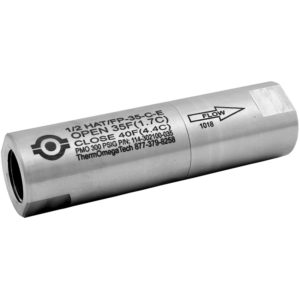Legionnaires’ disease is arguably the hottest topic in the plumbing industry today.
First identified after an outbreak in 1976, this potentially fatal form of pneumonia is contracted by aspirating Legionella bacteria and presents with coughing, shortness of breath, fever, and pain.
Since its initial discovery, the bacteria has been found to be pervasive in large-scale water systems, leading to offices, hospitals, hotels, and other sizeable buildings to double down on their sanitization, identification, and prevention efforts.
Legionella bacteria can be found in many domestic hot and cold water systems in trace amounts but does not present a health concern until it colonizes, and the bacteria are atomized and aspirated. In warm, stagnant water, the bacteria can grow and multiply to high concentrations, which is when it becomes dangerous.
Organizations differ on the specific temperature at which the bacteria will grow, but the most common range stated for Legionella bacteria survival is 68°-122°F (20°-50°C). The bacteria are dormant below 68° (20° C) and do not survive above 140° (60° C).
The key to preventing Legionnaires’ disease is to make sure that building owners and managers follow a water management program.
Unfortunately, there is no one guideline to follow on how to reduce the risk of Legionella growth and spread. Go to any ASPE meeting and ask the members what the best way is to prevent Legionella and you are likely to get as many different answers as there are attendees.
Organizations that mandate domestic hot water systems design guidelines and recommendations are similarly scattered and contradictory in their requirements, torn between the need for energy conservation and Legionella prevention.
ASHRAE, which touts energy conservation practices, suggests that temperature maintenance systems should be automatically switched off “during extended periods when hot water is not required,” whereas OSHA states that in the interest of Legionella prevention, DHWS should be excluded from energy conservation measures and run continuously…
To check out the full article visit pmengineer.com.

 There are many ways to heat these pipes, but in extreme climates, one of the most effective methods is to apply glycol tracing. Since glycol does not freeze and doesn’t require any special handling in environments that need to be explosion-proof, it makes it an ideal solution.
There are many ways to heat these pipes, but in extreme climates, one of the most effective methods is to apply glycol tracing. Since glycol does not freeze and doesn’t require any special handling in environments that need to be explosion-proof, it makes it an ideal solution.
 From the Bucks County Courier Times Success Through Diversity
From the Bucks County Courier Times Success Through Diversity
 ThermOmegaTech, Inc has been honored by having two of our valves nominated for
ThermOmegaTech, Inc has been honored by having two of our valves nominated for